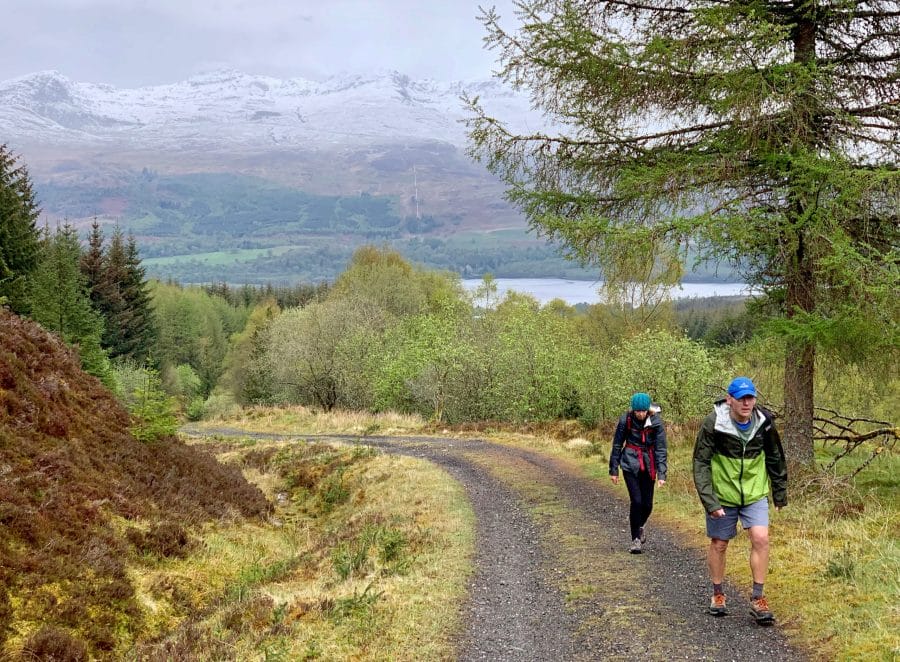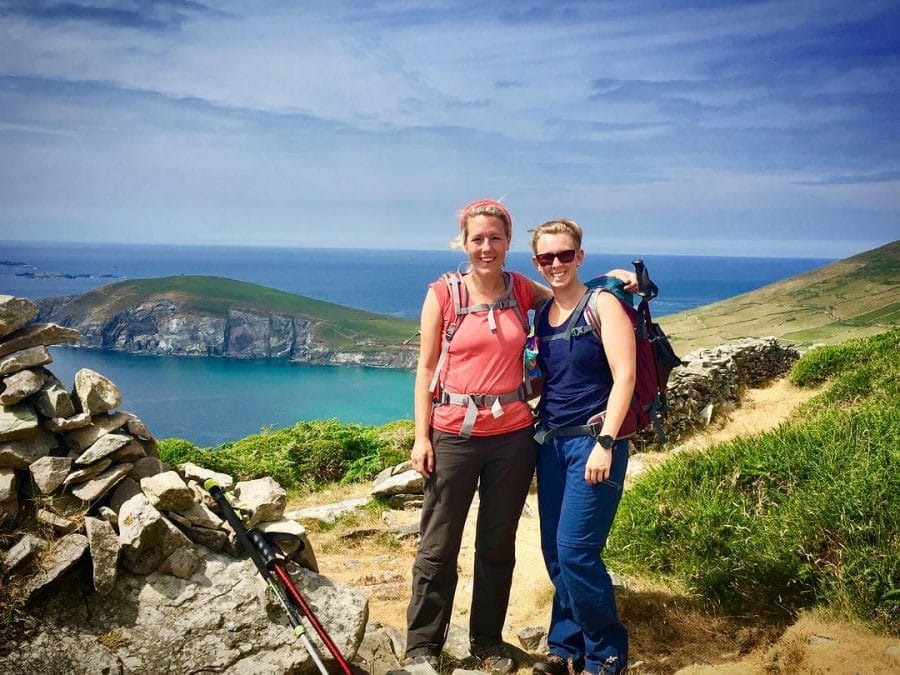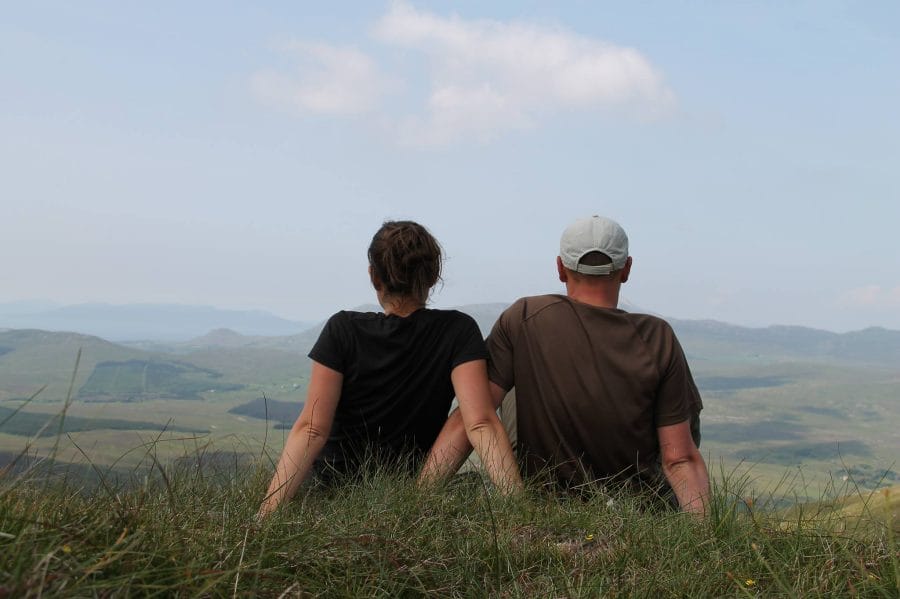Hiking and climbing for women are becoming more and more important in the outdoor world. Various blogs, travel providers and manufacturers have discovered women as a key target group. One example is the outdoor company REI, which sponsored an insightful study on the relationship between women and outdoor activities in 2017 as part of their widely acclaimed Force of Nature campaign.
On the other hand, there are also offers especially for men. While some welcome this, critical voices fundamentally question the gender segregation in the hiking media. So in this post, we ask if hiking is really a question of gender?

It’s not a question of gender
Distinguishing between the sexes in outdoor activities not only seems pointless to some, but also risky. They argue that nature experiences are basically neutral activities that can be enjoyed by women, men (and everyone else) alike. Those who insist on women’s hiking trips and hiking magazines for men run the risk of neglecting what they have in common and what connects them.
Or is it?
Even if this point of view seems convincing, some still feel that it falls short. On closer inspection, the assumption that women and men experience the outdoor world on an equal footing cannot be confirmed. As part of the Force of Nature study, REI asked over two thousand women in the US about their experiences with the outdoors. 6 out of 10 participants said that their interest in outdoor sports is not taken as seriously as that of men. This is expressed, for example, when giving advice in outdoor shops.
In addition, 3/4 of the participants stated that women were under more pressure to adapt to social norms and expectations. Such pressures would come from the media, men, other women, the family and society at large.

In connection
Historically, it wasn’t that long ago that women were just as unwelcome at the ballot box as they were on the via ferrata climbing route, or in public life in general. The resurgence of feminist theory is realizing that we have not yet overcome this legacy. A clear example is the wage gap: in 2017, women in Germany earned an average of 22% less than men.
This lack of equality in society as a whole is also reflected in the outdoor world.
Gender roles
The fact that women are perceived as a “new target group” by the outdoor industry not only shows that women were ignored by providers until recently, it also underlines how the image of gender roles is slowly changing.
Claire Sheridan, one of the leading climbers in Ireland, reports how she was welcomed in the mountain sports club of her university with the words “Girls don’t climb” in the 1970s. Back then it was considered improper for women to do sport and possibly look muscular. Women were seen as the “weaker sex” and society seemed to want to keep it that way.
The stereotypical division into “strong protectors” and “beautiful, defenseless women” has concrete effects. These definitions devalue women and serve as the perfect justification for their exclusion from historical male domains and dangerous territories such as politics, labor market and wilderness.
In the classic understanding, not only behavior and appearance, but also skills are gender-specific. Technical skills such as reading maps, navigating with GPS etc. are normally considered “male” strong points. So it’s no wonder that men are generally more confident about them.
Rigid gender roles are also harmful for men, for example when they fear that they are not a “real man” when expressing certain feelings. Or when they find themselves compelled to compete with other men all the time.

Hiking tips for men
The fact that hiking tips for men create much more interest than outdoor tips for women shows that a male target group has long been a matter of course in the outdoor world. As a result, the inhibition threshold for women is generally higher, especially when they are new to this area.
This is also due to the lack of role models. The REI study showed that 6 out of 10 women do not have a female role model in the outdoor area.
Ideal of beauty
Role models are mainly created through the media. The distorted representation of women in (outdoor) sport is therefore another aspect in the discussion about equality. Even today, women athletes are faced with the pressure to conform to a particular ideal of beauty if they want to attract media attention. The professional surfer Silvana Lima could not find a sponsor for 13 years because she did not meet the female gender norm.
But meeting the ideals of beauty is a double-edged sword. The mountaineer Melissa Arnot was the first woman to climb Mount Everest without additional oxygen. In an interview with National Geogrpahic, she talks about how she is always reduced to her appearance and how her technical skills are not taken seriously.

Risk and security
Another point must be made in the debate about equality and the outdoors. And it’s ugly.
Not all activities in nature have the same risk. And not all outdoor enthusiasts are looking for the same level of adventure. But especially when it comes to traveling alone or being in nature, women have to listen to whether that is not too dangerous. A scene from Cheryl Strayed’s bestseller Wild is a good example. After the young woman has hiked hundreds of kilometers alone on the Pacific Crest Trail and ran into bears, rattlesnakes and an elk, her most dangerous encounter in the wild is with two violent men.
Biology: difference and equivalence
Of course, there are also physical differences between the sexes, which must be addressed in view of the sometimes extreme stresses of outdoor sports. The industry has started to adapt products accordingly, for example with regard to the average back length of women. Outdoor bloggers have also started to focus on topics such as menstrual hygiene and pregnancy.
Parenthood is another aspect that can make it difficult for women in particular, but also for men, to live their love for nature. The Adventure Mama Initiative aims to redefine motherhood and combine it with a passion for the outdoors.
Biological quirks are part of this debate. They show that physical differences between the sexes do not contradict equality.

Empowerment and self-confidence
Extended stays in nature offer women, in particular, invaluable experiences of empowerment. In the much-cited REI study, 74% of the participants stated that they felt free in nature and that this was where they could escape their everyday stress. They also said that outdoor sports strengthen their self-confidence and have a positive effect on various health aspects.
Possible steps
So how can women and men best benefit from outdoor activities beyond social pressure and pre-defined role models? First of all, it is important to recognize the differences described. And to allow yourself to find your own way of dealing with them. Maybe that means spending more or less time in nature with your own gender. Everyone can only determine for themselves what empowerment is and whether it needs gender-specific spaces and group associations.
The National Outdoor Training Center in Scotland says, for example, in their women only courses that participants feel much more confident on these compared to mixed groups. But that doesn’t have to be the solution for all women.
In her master’s thesis on feminism and outdoor education, Amber Smith gives further recommendations for the most inclusive possible interaction in mixed groups. She suggests that care should be taken that all tasks that have to be done in camp, for example, are rotated. This gives male and female participants the chance to learn and appreciate both relationship work and household chores such as cooking and tidying up together with outdoor skills.
It also advises you to use language consciously. Sexist remarks (“Don’t act like a girl!”) Are taboo. It is also important how participants move around the room and prevent women from always standing behind a row of men when giving instructions and only listening from there.

A long way to go
Equality in the (outdoor) world is the goal, not the starting point of this debate. There’s still a long way to go so let’s work together to ensure that at some point outdoor is no longer a question of gender.


